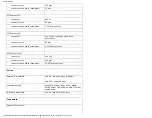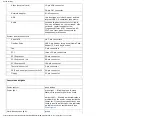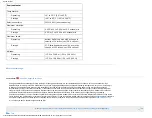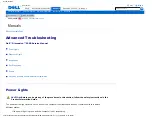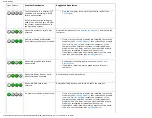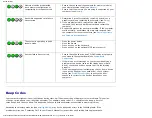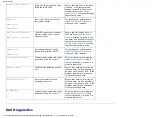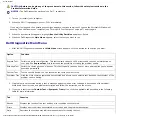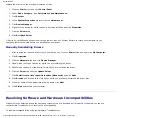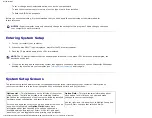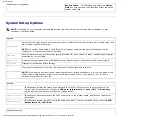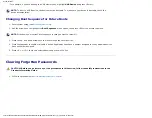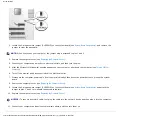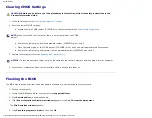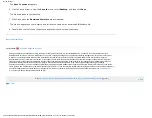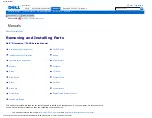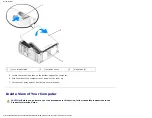
Documentation
replace the driver with the previously installed version.
1. Click the
Start
button and click
Control Panel
.
2. Under
Pick a Category
, click
Performance and Maintenance
.
3. Click
System
.
4. In the
System Properties
window, click the
Hardware
tab.
5. Click
Device Manager
.
6. Right-click the device for which the new driver was installed and click
Properties
.
7. Click the
Drivers
tab.
8. Click
Roll Back Driver
.
If Device Driver Rollback does not resolve the problem, then use System Restore to return your computer to the
operating state that existed before you installed the new driver.
Manually Reinstalling Drivers
1. After copying the required driver files to your hard drive, click the
Start
button and right-click
My Computer
.
2. Click
Properties
.
3. Click the
Hardware
tab and click
Device Manager
.
4. Double-click the type of device for which you are installing the driver.
5. Double-click the name of the device for which you are installing the driver.
6. Click the
Driver
tab and click
Update Driver
.
7. Click
Install from a list or specific location (Advanced)
and click
Next
.
8. Click
Browse
and browse to the location to which you previously extracted the driver files.
9. When the name of the appropriate driver appears, click
Next
.
10. Click
Finish
and restart your computer.
Resolving Software and Hardware Incompatibilities
If a device is not detected during the operating system setup or is detected but incorrectly configured, you can use
the Hardware Troubleshooter to resolve the incompatibility.
To resolve incompatibilities using the Hardware Troubleshooter:
http://support.dell.com/support/edocs/systems/dim9200/en/SM_EN/adtshoot.htm (10 of 11) [12/9/2007 11:19:07 PM]

